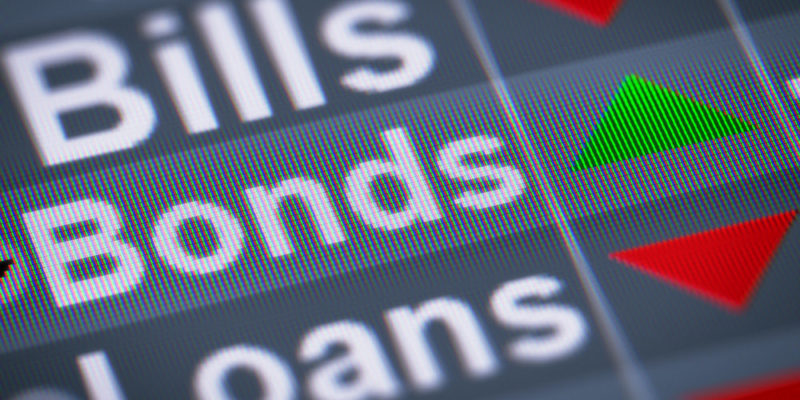We explain what the capital market is and the objectives it pursues. Also, what are its characteristics, risks, and advantages?
What is the capital market?
The capital market is the broad set of mechanisms that allocate and distribute capital resources through means of control and information that allow capital to pass from savings to investment.The capital that is saved does not generate more capital. Since all the economies of the world suffer from inflation, money savings lose value as time passes.
Alternatively, the owner of the capital can invest that money in the expectation of making a profit.
The capital market is divided into:
- Stock market. It is made up of fixed income instruments (such as bonds and obligations) and other variable income instruments, which are shares.
- Credit market. It is made up of long-term bank loans and credits.
Goals
 The main objective is to allow a continuous and orderly purchase and sale of securities. For companies, it is a way to obtain financing by expanding the sources of their capital.
The main objective is to allow a continuous and orderly purchase and sale of securities. For companies, it is a way to obtain financing by expanding the sources of their capital.For investors, it is a possibility to increase the value of their savings. However, this possibility does not always materialize.
Actions
Shares are bought and sold on the stock market. Each share is a part of the capital of a company.Buying a stock means buying a small part of that company. However, a minority shareholder has no decision-making power over the fate of that company.
When the company makes money, the value of the shares increases, and therefore the shareholder can make money by selling them.
When a company loses money, the value of those shares decreases, and the shareholder loses part of the money invested. In other words, shares are variable income instruments.
Bonds and obligations
 Like stocks, bonds and obligations are also bought and sold on the stock market. They are assets issued by the State and offer a medium-term fixed income. This income is received by the investor annually.
Like stocks, bonds and obligations are also bought and sold on the stock market. They are assets issued by the State and offer a medium-term fixed income. This income is received by the investor annually.These assets are medium or long-term, that is, the State keeps the capital invested for a term that can be as short as a few months or as long as 30 years.
Treasury bills are short-term, government bonds are medium-term, and government bonds are long-term.
Long-term credit market
Also called the debt market, it allows you to make safe investments, that is, unlike investing in stocks, it allows you to know what benefits will be obtained from the investments.The credit market is made up of bank loans and credits.
Although these are safe investments, they have the disadvantage that the returns they offer are minimal.
Stations
 They are the companies or entities that need financial resources to carry out their projects.
They are the companies or entities that need financial resources to carry out their projects.To obtain them, they register on the Stock Market and issue stocks (parts of their company) or bonds (debt to be paid with interest). Both public and private companies can be issuers.
Stockbrokers
Stockbrokers are intermediaries: they buy and sell shares with capital from their clients (investors).However, since they are knowledgeable about the capital market, they often invest their own capital as well. They can be a natural or legal person.
The main characteristic of stockbrokers is that they can buy and sell all kinds of securities, including stocks.
Other intermediaries
 In addition to stockbrokers, investors can use other types of intermediaries to participate in the capital market:
In addition to stockbrokers, investors can use other types of intermediaries to participate in the capital market:
- Securities dealers. They can buy and sell securities (for themselves and for third parties) but only outside the stock market, that is, all those securities that are not shared.
- Banks. They can buy and sell all kinds of securities for their clients.
- Financial institutions. Unions and credit, corporate real estate loans, and insurance companies, among others.
Advantages
For companies, the capital market offers the possibility of obtaining funds at lower interest rates than those required for a loan.On the other hand, investors can increase their capital without the need to buy or find a company.
Risks
 The more profit an asset potentially offers, the greater the risk of losing the investment made.
The more profit an asset potentially offers, the greater the risk of losing the investment made.Cheap stocks can be bought with the expectation that the company will flourish, but this may not happen. To avoid risks, it is necessary to have the advice of an expert intermediary.
In addition, each investor chooses whether he prefers to take a risk to have the possibility of obtaining greater returns or if he prefers to invest in fixed income assets, sacrificing a profit margin to minimize risks.
Indicators of the economy
Observing the behavior of the capital market allows one to draw conclusions about the state of a local economy and even about the differences between various national economies.Therefore, the news about the situation in the stock market can cause panic or expectations in various sectors.
On the other hand, specialists can also anticipate what is going to happen in the financial world from the analysis of the current situation.
In other words, the capital market functions as an indicator of the present and the future of an economy.
She has pursued her studies in The United States, where she has graduated in Business and Economics and is currently finishing her Master studies in International Economics and Finance. Miss. Amputee is fluent in three languages: English, Spanish and Russian and has elementary knowledge of French and Italian. She love exploring how Collaborative Research Group can become the best tool to achieve the (necessary) educational change. .
Leave a reply
Your email address will not be published. Required fields are marked *Recent post

Sport: What Is It, Types, Risks, Features, Characteristics and Examples
September 23, 2021

Dogs: Emergence, Features, Characteristics, Feeding and Breeds
September 24, 2021

Story: Definition, Elements, Structure, Features and Characteristics
September 24, 2021

Essay: Definition, Structure, Features, Characteristics, How to Do It
September 24, 2021
